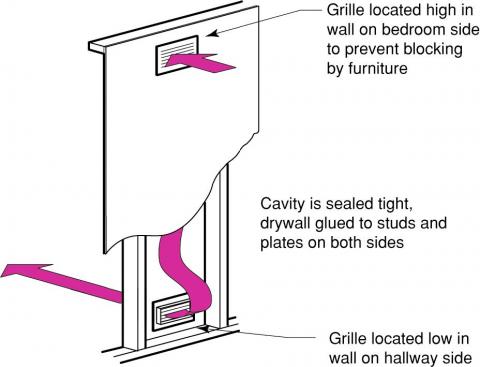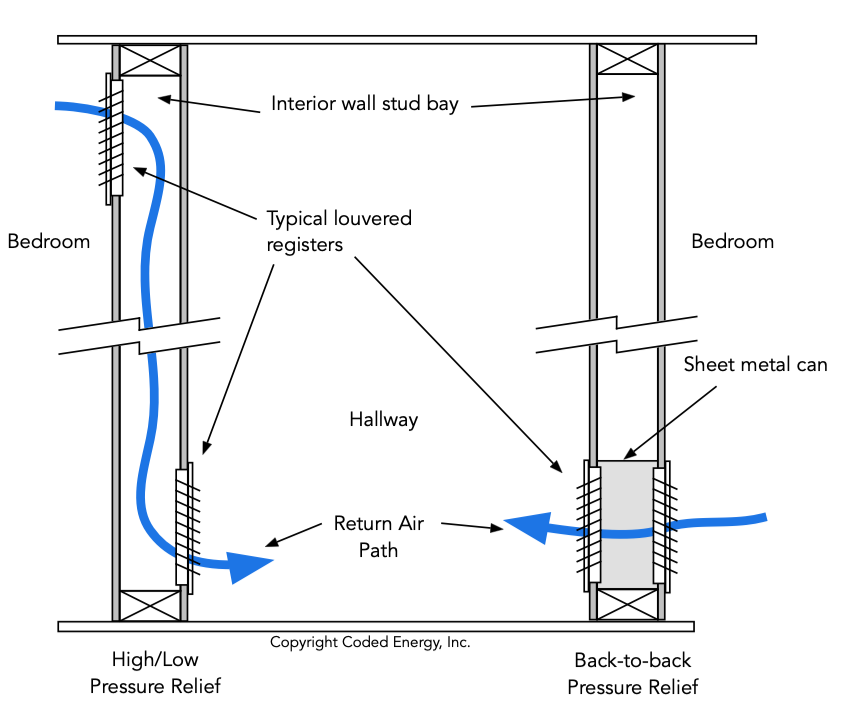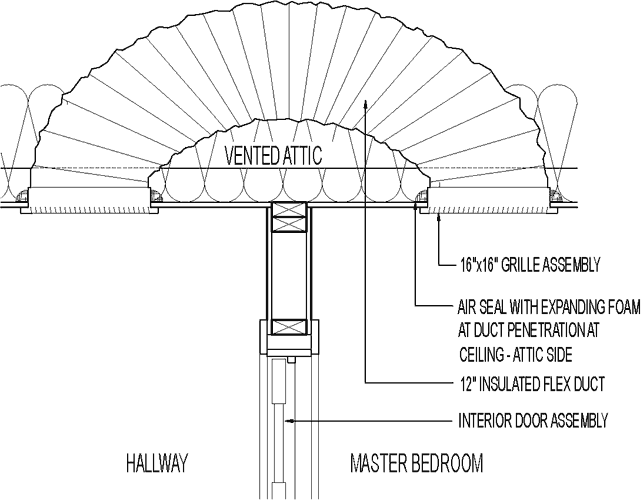When it comes to HVAC systems, air transfer grilles are often necessary for maintaining balanced airflow and pressure throughout a building. Bringing the return air to the HVAC unit is essemntial for the equipment to operate properly. However, they come with a set of challenges that many find undesirable: they can be unsightly, transfer noise between rooms, and compromise privacy. To address these concerns, it’s essential to emphasize the proper design of air transfer ducts that incorporate grilles in a way that maximizes efficiency while minimizing the downsides.
The Challenges of Traditional Air Transfer Grilles
- Aesthetic Concerns: Traditional grilles often stand out as unsightly additions to walls or doors, clashing with interior design.
- Noise Transfer: Air transfer grilles can act as conduits for sound, allowing noise from one room to easily pass into another, disrupting the quiet environment many homeowners seek.
- Privacy Issues: Grilles can also compromise privacy, particularly if they allow for visual access through a door or wall, which can be uncomfortable in spaces like bedrooms or offices.
Design Solutions for Air Transfer Ducts
To overcome these challenges, consider the following design solutions that focus on air transfer ducts integrated with grilles, ensuring a more aesthetically pleasing, quiet, and private environment:
- Concealed Air Transfer Grilles amnd wall cavities:
- Instead of relying on direct transfer grilles on doors or walls, design a concealed air transfer duct that routes airflow through a wall cavity or ceiling space.
- These ducts can be connected to grilles placed in less visible areas, such as high on the wall or behind furniture, effectively hiding them from view.

- Ducted Transfer Air duct with grilles:
- Double Grille System:
- Consider using a double grille system where two grilles are separated by a short duct segment within the wall. This setup creates a visual barrier while still allowing air to pass through.
- Ensure that the grilles are offset from each other, so there is no direct line of sight through the duct, preserving privacy.

- Aesthetic Integration:
- Air can be retirned through the dropped ceiling cavities. Dropped ceiling an dcreating halo effects with LED lighting is a common decor in buildings now a days. This can blend seamlessly with walls or ceiling.
Conclusion
While traditional air transfer grilles have their drawbacks, thoughtful design of air transfer ducts can overcome many of these challenges. By concealing ducts, incorporating sound-dampening features, and carefully selecting and positioning grilles, you can maintain the efficiency of your HVAC system without sacrificing aesthetics, noise control, or privacy.
Investing in these design solutions not only enhances the functionality of your HVAC system but also contributes to a more comfortable and visually pleasing living environment. In residential settings, where these issues are most pronounced, taking the time to properly design air transfer solutions can make a significant difference in the overall quality of life.


Recent Comments